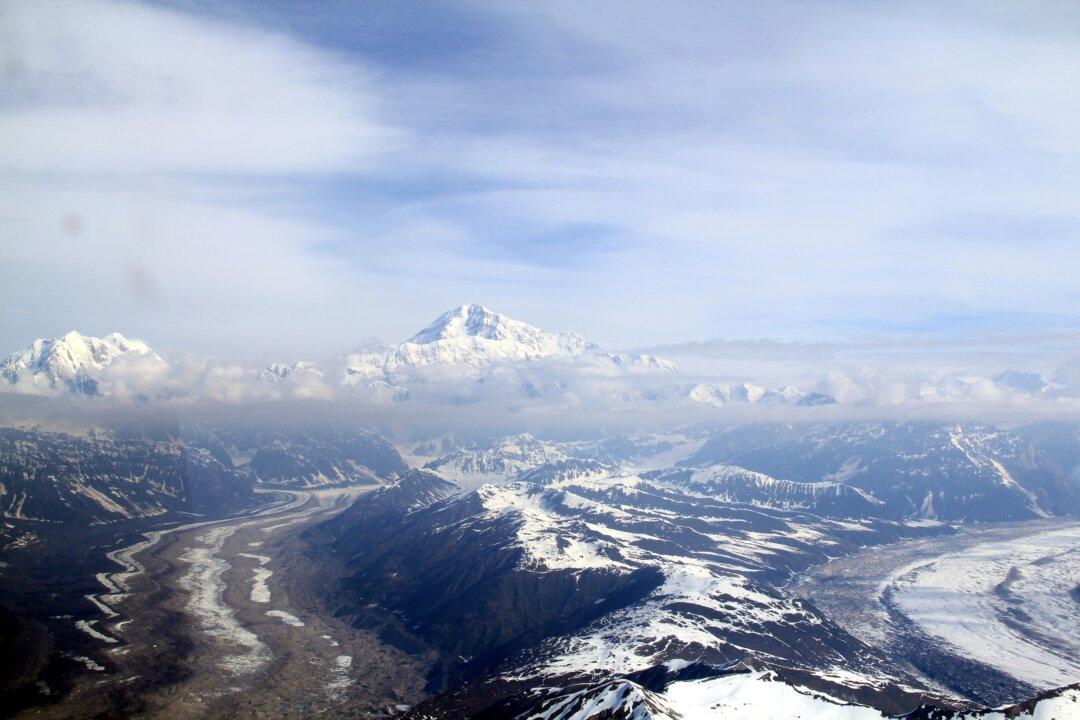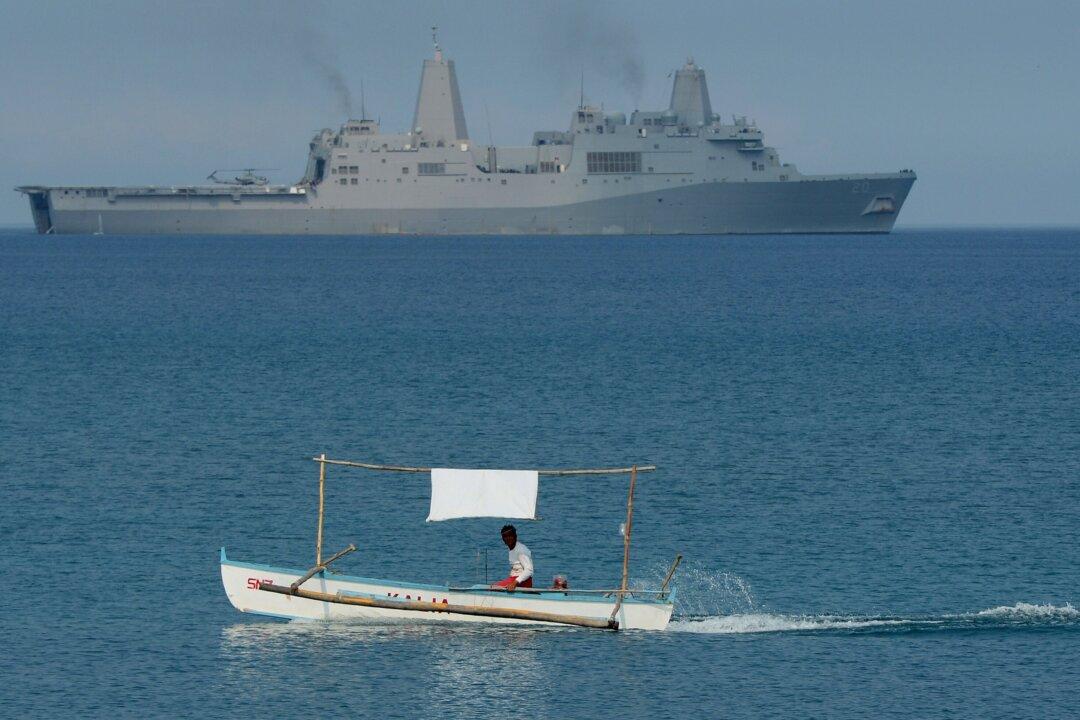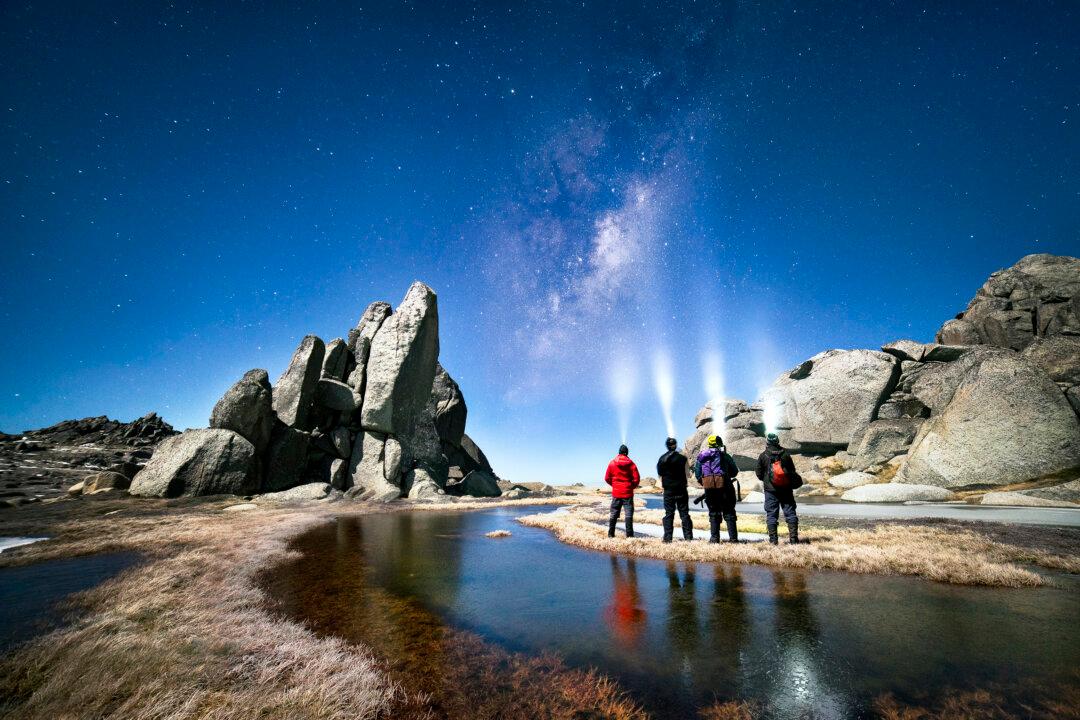ANCHORAGE, Alaska—The hotel foyer is festooned with animals: polar bear and grizzly, elk and caribou. A massive moose head overhangs the bar doorway and a full sized wolverine glowers from the top of the stairs. Reindeer burgers are on the menu along with Alaskan crab and fresh halibut. It is busy in Anchorage, Alaska’s largest city, as tourists pour in for the summer season.
“Alaska is different,” according to Richard Fosse, who is an interpretative ranger for the National Parks Service in Anchorage. That difference supports a billion dollar tourism industry. Over 1.5 million tourists visited the state between May and September in 2011. The industry accounts for significant drops in unemployment, in some areas to zero, during summer.
Tourism, however, is not Alaska’s biggest revenue generator. That is reserved for the oil and gas industry, which generates over 80 percent of state revenue. Through the Trans-Alaska Pipeline System (TAPS), which transports crude oil from Prudhoe Bay in the North Slope to the south, Alaska accounts for 20 percent of the United States’ domestic oil production.
The influence of the petroleum industry is a defining feature of Alaska. Bought from Russia for $7.2 million in 1867 and recognized as the 49th U.S. state in 1959, it is young state but as a result of its oil wealth, is the only state that does not collect sales tax or levy taxes on earned or unearned personal income, according to banking industry website, bankrate.com.
Oil royalties are distributed annually to every Alaskan resident man, woman and child via dividends from the Alaska Permanent Fund Corporation, established following TAP’s completion. The fund’s annual dividend has been as high as $3,000 and is presently around $800.
Making the Most of the Sun
In downtown Anchorage, fur shops lined the street, and hundreds of women in all shapes, sizes and ages were on the run, some working up a sweat, others’ mouths working as fast as their legs. A family swept by, the dad pushing a baby in a stroller. He is wore a pink tutu and his kids were dressed as fairies. It was the weekly marathon, this one to raise money for breast cancer research, and around 8,000 people are participating.
Darkness falls for only two or three hours in an Alaskan summer, and even then it is twilight, so marathons are often held around midnight too.
“We sleep more in winter, not because we are hibernating but because we are all so exhausted from running around in summer,” joked a local.
At the Anchorage markets, a couple walked past, each with a furry thing scurrying along on a leash. The furry things were ferrets - Vlad and Garran - out with their owners for a morning walk. They were the center of attention as vendors unpacked boxes and laid out their wares. It was cruise ship day, which means big crowds and big sales.
Over half of the visitors to Alaska, 59 percent last year, arrive via one of the many cruise ship companies. The rest, about one third, fly in or make their way up from southern states in vehicles or via ferries.
The promise of magnificent scenery– fjords, rugged snow covered mountains, calving glaciers and abundant wild life-are all drawing cards. Alaska is home to eight out of the ten tallest mountains in North America, and many of the cruise companies offer inland tours too. Denali National Park, a couple of hours north of Anchorage, is the popular destination. Tourists are keen to see Mount McKinley, at 20,320 feet North America’s tallest mountain. Then there is the abundant wildlife, including bears, caribou, elk and moose.
The largest state in the U.S., around two thirds of Alaska is owned and managed by the federal government, and much of it is national parks, national forests and wildlife refuges. It includes the largest American wildlife refuge, the 19 million acre Arctic National Wildlife Refuge, much of which is inaccessible.
Hunting
At the Anchorage markets, Tassita Toneno tended her Alaskan Zipper Pulls stall. She explained the difficulties a snow mobile driver may have trying to maneuver a traditional zipper in minus 45 degree temperatures and howling winds. Toneno makes the pulls out of Halibut lures, and adds glass, antler tips and even walrus bone or tusk carved by native Alaskans.
Her wares are ”Made in Alaska for Alaskans,” she said, which is just as well. Leaving Alaska with the items could be a problem, because traveling through an international port with any material from a walrus requires a permit or it will be confiscated, a result of CITES (pronounced “SITE-eez”), or Convention on International Trade in Endangered Species.
Stallholders sporting jewelry and carvings from walrus tusks and whalebone find the restrictions annoying, and it is common to see people carrying bags from the National Rifle Association with the slogan “Protect Hunting Rights.”
Hunting is big in Alaska, not only for Alaskan natives who traditionally and legally hunt most animals for subsistence, but also for other Alaskan residents, including those who have settled in Alaska from southern states.
While some hunt for sport, most hunt to feed their families. According to locals, bears are good eating early in the season when they have been feeding on grass and later, when they have filled up on blueberries. Mid-season, after gorging on salmon, they are better left alone. Moose meat can be a little tough and is best prepared in casseroles. Venison is good at any time.
Locals stress they only hunt to feed their families, and doing so can provide fresher and better quality meat.
Alaskan outsiders may find it hard to imagine shooting magnificent wild animals, but there is a lot about Alaska that is hard to imagine. The longer one stays, the more it resonates - Alaska is different.





